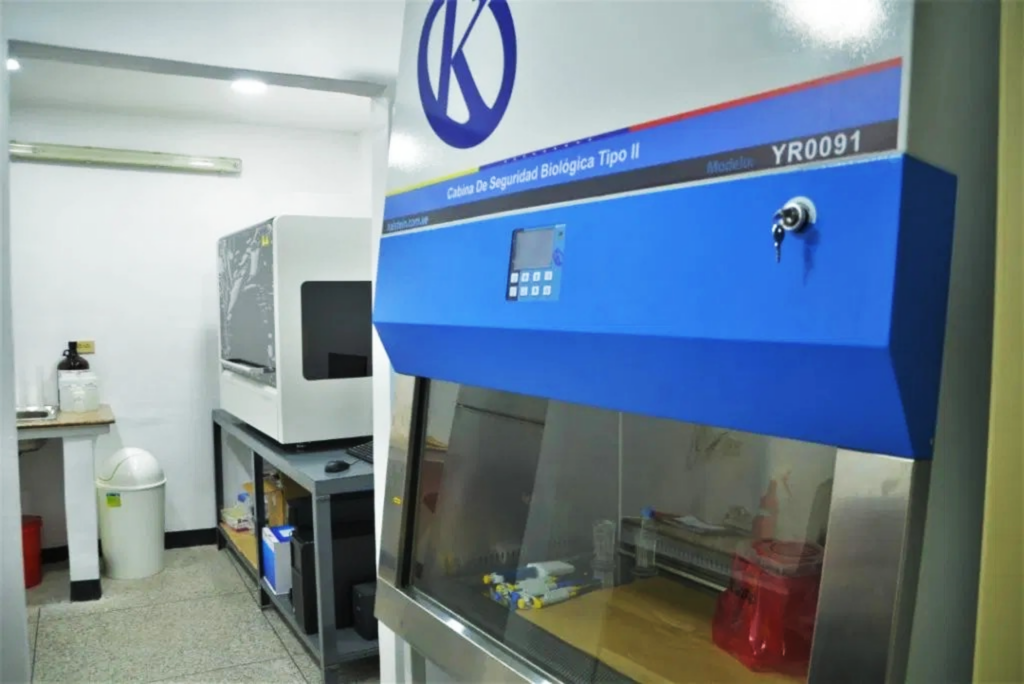Laboratory fume hoods are fundamental components in the operation of this space to maintain air quality. The variety of fume hoods in the industry meets the needs of scientists. Laminar flow hoods, biosafety hoods and extraction hoods all have a purpose.
They are forced-circulation chambers which, depending on their specifications and design, provide different levels of protection. They are essential in a clinical microbiology laboratory and are classified according to level and type of protection. In principle, it is necessary to distinguish between gas extraction bells, laminar flow cabinets, PCR cabinets and biological safety cabinets.
Gas extraction hoods
The gas extraction hood (or gas extraction cabinet) is a ventilated enclosure that captures fumes and vapors from laboratory chemical handling. Although it is a very useful piece of equipment for containing chemical hazards, it offers no protection against biological hazards.
Laminar flow cabinet
Laminar flow booths are enclosures that use a fan to force air through a HEPA filter by sweeping over the work surface. Air flow can be vertical or horizontal. These cabins offer protection only to the material being handled inside, but never to the operator, so they are not recommended for work in a clinical microbiology laboratory. They are, however, an indispensable working tool in so-called “clean” areas.
Biological safety cabinet
Biological safety cabinets are ventilated compartments designed to minimize risks to laboratory personnel exposed to infectious agents. This is particularly important given that many laboratory operations involve the formation of aerosols. The main aim of such equipment is to provide a work area that minimizes the likelihood of an airborne particle escaping outside the booth and contaminating the operator and the surrounding area. In addition, some of them offer protection for the material handled.
When a biosafety cabinet is used by properly trained personnel who are aware of its limitations, it becomes a highly effective piece of containment equipment for reducing potential leakage of biological contamination. However, it should be borne in mind that a booth is never a substitute for proper microbiological technique.
These cabins feature two systems that prevent the escape of pollution: air barriers and filters. Air barriers are created by allowing air to flow in a single direction and at a constant velocity, giving rise to a veritable “curtain” of air known as laminar airflow. This is, by definition, a turbulence-free flow. Filters are designed to trap the particles contained in this airflow, and the ones usually employed are HEPA filters, which are 99.97% efficient at retaining particles down to 0.3 microns in diameter.
PCR safety bells
A polymerase chain reaction (PCR) work cabinet is a three-sided, covered work area that provides space for DNA and RNA amplification. These work booths, used in biology and genetics laboratories, avoid cross-contamination between samples, and the ultraviolet light they possess keeps the area sterilized. They provide a pollution-free environment.

